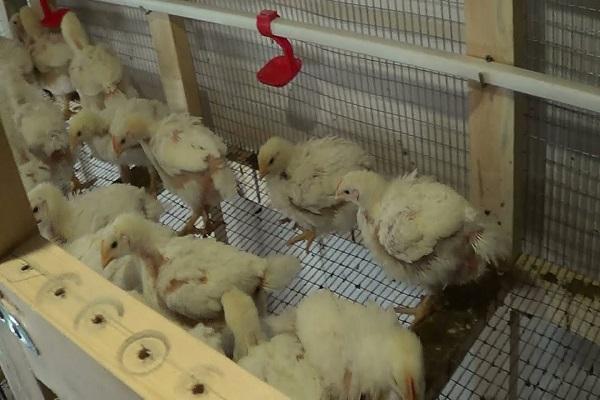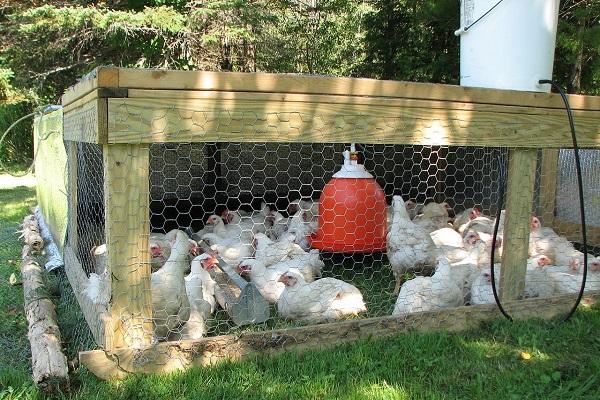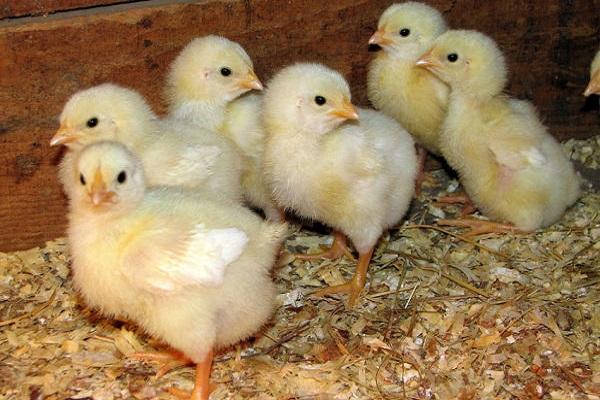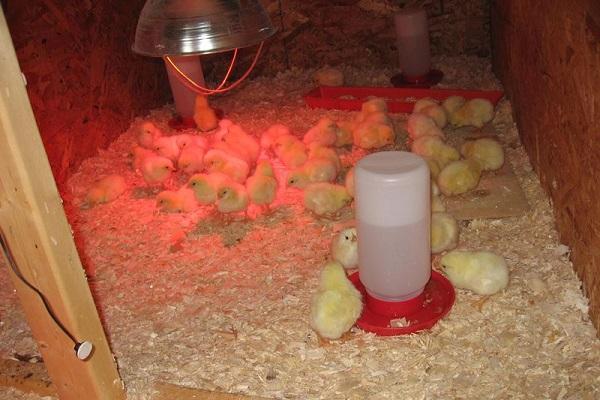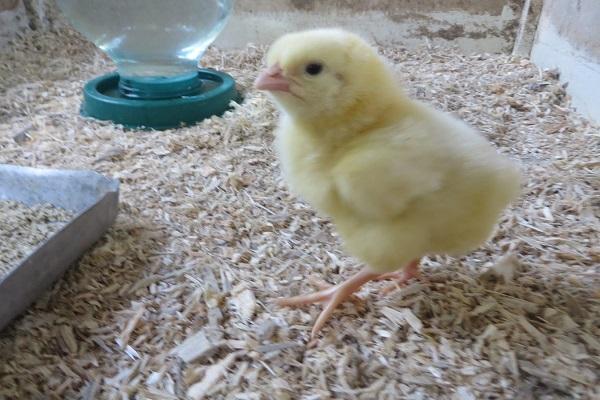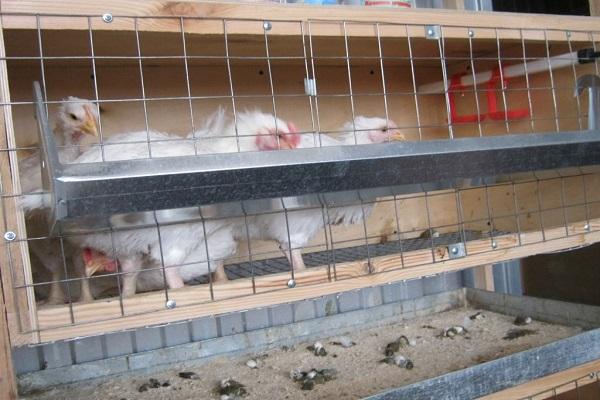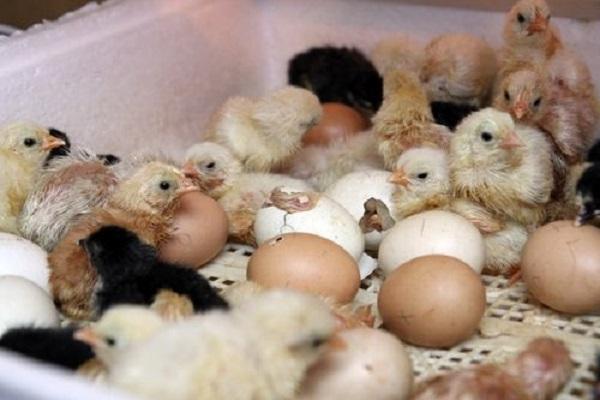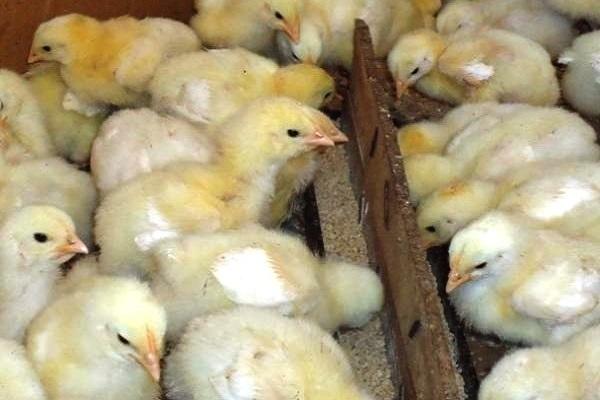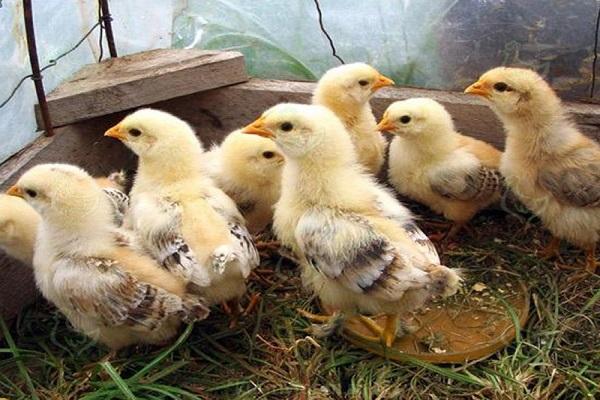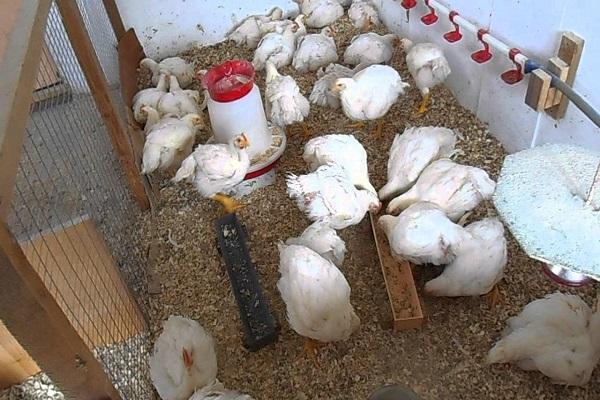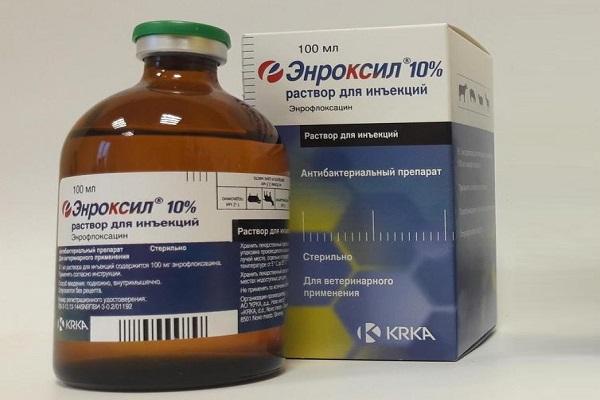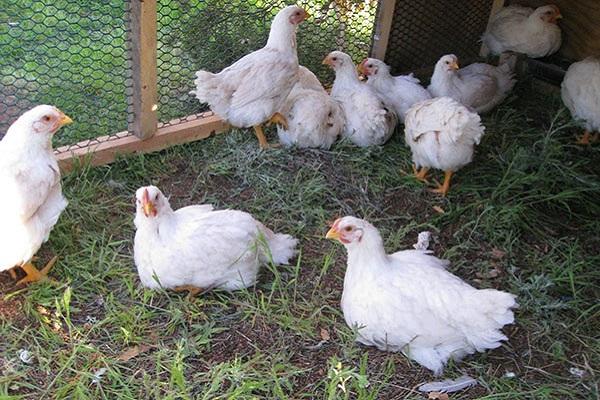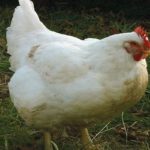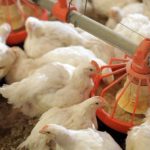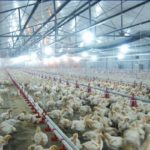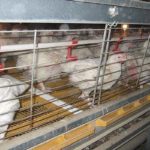Chicken meat is considered one of the best in terms of quality and benefits for humans. To have a pure product, it is advisable to raise broilers at home. Anyone can do this, even a novice poultry farmer. The main thing here is to properly keep the chickens and feed them. Then, after a short time, you get tasty meat.
- Features of raising broilers at home
- Advantages and disadvantages
- Selecting breed and chickens
- Broiler keeping methods
- Outdoor breeding
- Cell breeding
- Breeding broilers in an incubator
- Features of feeding
- From the first days
- No antibiotics
- Compound feed
- Transfer of young animals to the chicken coop
- Prevention of broiler diseases
- How long does a broiler chicken grow before slaughter?
- Common Mistakes
Features of raising broilers at home
Broilers are prepared for meat from the first day, because it is not without reason that the name of the bird in English is translated as “fry over fire.” But the meat is best taken from chickens. Chickens are needed to lay eggs. They are mated in such a way as to continue breeding the breed.
For large farms, rapid meat production is important, which is why hybrid crosses are bred. They can only be grown in an artificial environment.
In an individual farm, you can successfully raise broilers if you do not ignore the recommendations for keeping and feeding chickens. Do not delay the process of slaughtering chickens. And to breed the breed, roosters and hens are taken in equal proportions.
Broilers are bred using the extensive method. Chickens are purchased in the spring, and after 2 months they are sent to slaughter. Year-round intensive rearing is aimed at purchasing young animals every 3 months.
For beginners, raising broilers requires some knowledge. But they are accessible and uncomplicated.
Advantages and disadvantages
Broilers should be raised at home because:
- weight gain of 3-5 kilograms occurs quickly;
- they are easy to care for;
- provide a tender and juicy product;
- do not require a large walking area;
- when slaughtered they are easily plucked.
Birds can be kept in different ways, depending on the capabilities of the owners. Broilers are calm and do not create problems for summer residents. The disadvantage of the breed is that chickens lay few eggs. But broilers were created for meat production, and not for egg production.
Selecting breed and chickens
Poultry breeding begins with the purchase of chickens. It is best to purchase both roosters and hens, so that you can raise the birds yourself. It is necessary to choose chickens from reliable producers. They should be 10 days old.By this time, the young animals are already stronger and will be less sick. Younger chickens require special care and special living conditions. They die more often from disease. When purchasing chickens, choose those that are distinguished by activity and mobility. You need to carefully examine the appearance of the chickens.
If the eyes are not shiny, but dull, and the plumage is unevenly distributed, then you should not take such chickens for breeding.
Of the breeds best suited for growing broilers ROSS-308. After six months, these short, white individuals reach a weight of 2.5 kilograms. The hens lay eggs well.
Famous for gaining weight quickly broiler COBB-500. The breed should be raised for meat and eggs. In the Smena breed, weight gain occurs quite quickly. Chickens easily tolerate unfavorable living conditions and rarely get sick. Popular breeds include Cornish, Cochin, and Faverol.
Broiler keeping methods
Wherever chickens are kept, they need to be kept dry. Ventilation is installed in the room, but the bird should be protected from drafts. The bird must lay in a specially designated place.
Outdoor breeding
Broilers should be kept on the floor by providing them with deep bedding. Choose a room of such an area that there are up to 12 individuals per 1 square meter. The method is suitable for maintenance in both summer and winter. The main conditions are temperature and humidity. Before moving the chickens in, the room is heated to 26 degrees. This is the optimal temperature below which chickens will develop health problems. Gradually it should be raised to 30-35 degrees.
Ten-day-old young animals are prepared in a room where the humidity will be 60%. As broilers grow, humidity should be kept at 70%. The light burns in the chicken coop for days.
To make it easy for the bird to adapt to the conditions of detention, prepare the room in advance with:
- washing, disinfecting walls and floors;
- drying;
- pouring lime onto the floor, using 1 kilogram of the substance per square meter;
- installation of lighting;
- laying sawdust and shavings on the floor.
The condition of the litter is monitored at all times when keeping broilers. In winter, do not forget that the litter should be thicker than in summer. It should be changed when it gets dirty. You cannot place containers with water on the litter. After all, if raw, it will lead to the proliferation of pathogenic microorganisms and poultry diseases.
Cell breeding
Broilers can be bred in cages successfully, since they are inactive and comfortable in a limited space. The place must be prepared taking into account the fact that up to 18 chickens or 9 adult hens can fit in 1 square meter.
If there is not enough space on the site, the cells are arranged in 2 tiers. The advantage of growing in cages is that natural ventilation occurs there. The bird is protected from rain by a reliable roof. Care includes maintaining air temperature control. Broilers do not tolerate sudden changes in temperature. Chickens grow better at 30-35 degrees Celsius.
Bedding is placed on the floor of the cages, which should always be dry and clean.
Breeding broilers in an incubator
To reduce the cost of buying chickens, summer residents try to raise the birds themselves in an incubator. And here you need to approach the choice of eggs wisely:
- Material should only be taken from chickens older than 2 years.
- The hen must be healthy and strong.
- Upon inspection, no damage is found on the shell. In terms of size, take the average, regular shape.
- Before laying, the breeding material should be stored for no more than 3 days in a dark and cool place.You can determine whether an egg is fertilized by candling it. A dark dot is visible in the center.
Before placing the eggs in the incubator, they are washed in a solution of potassium permanganate. The incubation period lasts 21 days. At this time, the temperature is maintained at 37.5 and 37.2 degrees, humidity - 50-65%. In the first week, eggs are turned several times a day.
Features of feeding
Hybrid crosses have a clear feeding schedule. Each period of broiler life requires a certain set of nutrients. Some people buy ready-made complexes for poultry nutrition, while others make up their own proportions. Broilers need constantly fresh water. Its temperature is within 30 degrees. Occasionally add sugar or potassium permanganate to the water.
From the first days
The resulting day-old chicks especially suffer from lack of water. This needs to be taken care of. They are given water with sugar diluted in it. Dissolve a teaspoon in a liter of water. Many poultry farmers advise using boiled eggs for the first feeding, finely chopping them. Others mix millet with egg powder.
The composition of the pre-start feed includes corn. It is the basis of nutrition along with wheat or bran, milk powder, barley, and soybean meal. One chicken is provided with 10 grams of feed per day. By 2 weeks, its amount increases to 25 grams.
The drinking bowls are constantly filled with fresh water. It is useful with 1-3 crystals of potassium permanganate or sugar.
Eight-day-old chickens are given whey mash. You need to add cottage cheese, chopped egg, ground shells, chopped onion to it. A little later, the amount of greens in the food is 10%.
The basis of chicken nutrition is corn - 48%, soybean meal - 20%.Wheat is enough 12%, fish meal - 7%, brewer's yeast - 5%. Be sure to add chopped herbs, a little chalk, and feed fat.
Young animals are fed up to 8 times a day. If everything is not pecked, then the feeders are cleaned of food debris by washing.
No antibiotics
The debate about whether antibiotics should be used when raising broilers or not has not ceased for a long time. In homesteads they try to exclude medicine from the diet. But they believe that without antibiotics, broiler mortality increases. Regularly including small amounts of drugs in poultry feed ensures accelerated growth and rapid weight gain.
Whether or not to give antibiotics to broilers is up to everyone to decide for themselves. But if a disease occurs, you cannot do without them..
Compound feed
Combined feeds begin to be given to chickens from birth. Only the ratio of feed components changes. First, you need a pre-starting mixture for the chickens. Ready, it contains all the necessary vitamins and amino acids. You can make up your own mixtures.
As the chickens grow, the ratio of grain crops changes. Be sure to include corn and wheat, cake or soybean meal in the broiler diet. It is useful to mix in a little bone or fish meal or chalk. It is necessary not to forget about greens, which are successfully represented in mixed feed by fresh nettle, previously scalded and crushed.
The frequency of feedings is important. If at first it reaches 8 times a day, then gradually reduce it to 6-4.
Transfer of young animals to the chicken coop
The time has come to move the grown chickens into the chicken coop. The room is prepared in advance, washed, whitewashed, and disinfection measures are carried out. The floor is sprinkled with lime and sawdust in a layer of 10 centimeters.Containers for food and water are washed clean. They must be suspended in order to be properly cared for. An adult bird will need bathing containers. They are covered with wood ash. They prepare shell rock and ashes for feeding troughs.
Before placing the young animals, the chicken coop is heated to 27 degrees Celsius. Broiler chickens need to feel comfortable. They need it to be light, warm and dry.
Prevention of broiler diseases
An artificially bred hybrid needs protection from diseases. It is imperative to carry out preventive measures in order to obtain high-quality meat from poultry.
For 5-day-old chickens, it is better to take Enroxil in solution for watering. Feed for 10-day-old young animals should be fortified. 1 milliliter of Vitasol is diluted in 2 liters of water.
Vaccination is carried out for broilers on the 11th day of life. Repeat it 2 more times every 5 days.
To protect against coccidiosis, you need to give the drug "Tromexin", 2 grams of which are diluted in 1 liter of water. It is important to vaccinate chickens on the 23-28th day of life.
How long does a broiler chicken grow before slaughter?
Broilers should be kept until a certain time. It is advised to slaughter the bird after 2-2.5 months. Otherwise, over time, broiler meat will become tough and dry. If you leave broilers longer than usual, their appetite will not decrease, but their weight gain will stop.
Common Mistakes
Errors in the maintenance of broilers lead to the fact that individuals die or stop growing. The main thing is to prevent rotting of the litter. Mold forms on it if drinkers and feeders are placed on a layer of sawdust.
It is necessary to constantly clean the premises and cages of droppings.In this case, it is worth disinfecting the walls and floors and drying them to prevent the development of diseases.
When the nutrition of broilers is not balanced, it contains few vitamins and microelements, then the birds begin to peck at each other’s heads. Weak specimens suffer the most from attacks.
Young animals must be fed at the same time. Don't forget about clean warm water. Broilers often die due to dehydration.
Thanks to mandatory vaccination, all birds can be saved if symptoms of the disease appear in some individuals.
A profitable business will be successful when you properly engage in broiler farming.

